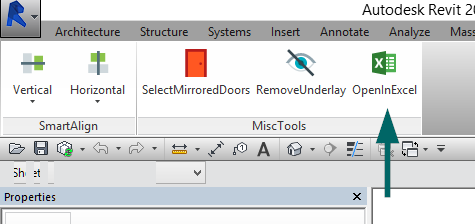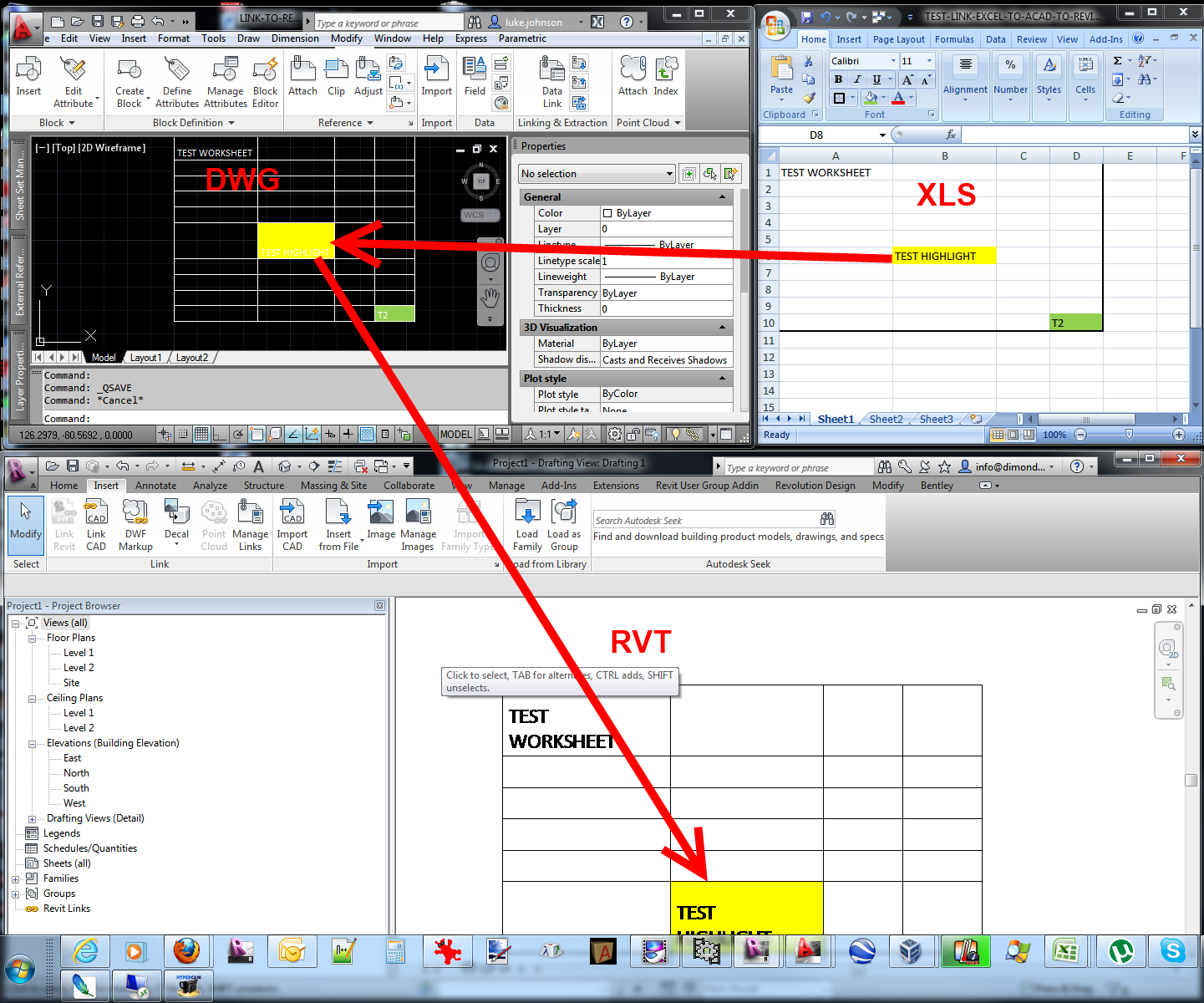Elevate Your Layout Video Game with Necessary Revit Add Ins
Wiki Article
Excel-to-Revit: A Game-Changing Process for Architectural Layout - Introducing the Secrets
Are you tired of costs hours on building layout? Look no more! Introducing excel-to-revit, the game-changing process that will certainly transform your style procedure. With excel-to-revit assimilation, you can simplify your building design, unlock efficiency, and make the most of partnership within your group. In this post, we will certainly unveil the secrets of this powerful tool, showing you exactly how it can transform your style jobs. Get prepared to take your architectural style to the following level with excel-to-revit!The Power of Excel-to-Revit Integration

Think of the comfort of being able to modify and upgrade job data in Excel, and quickly see those changes mirrored in your Revit design. No much more manual information entrance or tedious updates. With Excel-to-Revit assimilation, you can save time and reduce mistakes by leveraging the power of Excel's features and formulas to instantly produce accurate information in Revit.
Not only does this assimilation enhance efficiency, however it also boosts partnership among employee. You can conveniently share Excel data with associates, that can then import the data into their Revit versions. This promotes a seamless exchange of details and ensures that every person is collaborating with one of the most current data.

Improving Architectural Style With Excel-To-Revit
Improving building design is made less complicated with the use of Excel-to-Revit (revit plugins). With this effective assimilation, you can optimize your operations and save beneficial time throughout the design procedure. By leveraging the capabilities of Excel and Revit, you can effortlessly move data in between the two platforms, removing the need for hand-operated data entry and lowering the risk of errorsExcel-to-Revit permits you to import and export data effortlessly, allowing you to conveniently update and modify your building layouts. You can create routines, compute amounts, and generate reports in Excel, and after that move that data directly right into your Revit model. This assimilation ensures that your layout info is constantly up-to-date and synchronized, getting rid of the demand for hand-operated updates and decreasing the chances of disparities.
By making use of Excel-to-Revit, you can additionally benefit from the powerful computational capacities of Excel. You can perform complex computations, examine information, and automate repeated tasks, all within Excel. After that, with simply a few clicks, you can import the outcomes back right into Revit, allowing you to make enlightened layout decisions and maximize your building layouts.
Unlocking Efficiency: Exploring the Excel-to-Revit Operations
Optimize your performance by flawlessly incorporating Excel and Revit for an extra reliable process. With the Excel-to-Revit workflow, you can unlock an entire new level of efficiency in your architectural layout procedure. By using the power of Excel's information administration capabilities and combining it with the flexibility and accuracy of Revit, you can enhance your style process and conserve beneficial time.Among the essential benefits of this assimilation is the capability to import and export data in between Excel and Revit. This indicates that you can quickly transfer task info, such as room timetables or product quantities, from one software to the various other, getting rid of the demand for hands-on data access and lowering the possibilities of errors. You can additionally produce customized formulas and estimations in Excel to automate repeated tasks and execute complex estimations, which can then be seamlessly incorporated into your Revit versions.
Additionally, the Excel-to-Revit operations enables far better sychronisation and cooperation between team participants. With Excel functioning as a central data center, multiple group members can work with various aspects of the job at the same time, sharing and upgrading details in real-time. This not only enhances interaction however also guarantees that everyone is dealing with one of the most up-to-date information, eliminating the danger of disparities.
Optimizing Collaboration: Excel-to-Revit for Architectural Teams
By effortlessly integrating Excel and Revit, architectural groups can greatly improve collaboration and attain extra reliable style results. When using this powerful operations, you can conveniently move data in between Excel spread sheets and Revit designs, improving the design procedure and improving communication amongst group members.Furthermore, by leveraging Excel's effective computation capabilities, you can execute complicated calculations and analysis on your layout data, driving and providing important understandings educated decision-making. This assimilation likewise enables you to export information from Revit to Excel, allowing you to produce comprehensive records, graphes, and charts for presentations and evaluation. This collaborative operations promotes effective interaction and sychronisation among staff member, as Excel functions as a main center for information monitoring and sharing.
Overall, by accepting the Excel-to-Revit workflow, architectural teams can attain greater degrees of collaboration, performance, and accuracy in their layout process. revit add ins. This combination encourages teams to function together effortlessly, making certain that everybody gets on the same page and adding to the success of the project
Revealing the Keys of Excel-to-Revit Integration

Among the secrets of Excel-to-Revit combination is the capacity to leverage the power of solutions and estimations in Excel to drive specifications and create complex geometries in Revit. You can link Excel spreadsheets to Revit family members, permitting you to input data like it directly into the spread sheet and have it instantly upgrade in the Revit model. This enhances the layout procedure and guarantees precision and uniformity throughout the project.
One more trick is the capacity to develop custom schedules and reports in Excel, using data drawn out from Revit. This enables you to assess and visualize project info in a method that is not feasible within Revit alone. You can easily generate quantity liftoffs, price price quotes, and task timelines, providing useful understandings for decision-making and task monitoring.
In enhancement, Excel-to-Revit combination allows effective partnership among employee. Numerous customers can service the exact same Excel spreadsheet concurrently, making it much easier to collaborate and track modifications. You can also use Excel's commenting attribute to give comments or interact design alterations.
Final Thought
By integrating the power of Excel and Revit, architects can now function extra efficiently, conserve time, and generate far better layouts. Start including excel-to-revit integration into your building design procedure today and transform the way you work.With simply a couple of clicks, you can import the results back right into Revit, enabling you to make enlightened style choices and enhance your architectural styles.
By utilizing the power of Excel's data management from this source capabilities and combining it with the flexibility and accuracy of Revit, you can streamline your design process and save valuable time.
By perfectly integrating Excel and Revit, architectural teams can greatly enhance collaboration and achieve more efficient style outcomes. When utilizing this powerful operations, you can quickly transfer information in between Excel spreadsheets and Revit versions, improving the design procedure and enhancing interaction among group members.Furthermore, by leveraging Excel's effective calculation capacities, you Visit Website can do complex estimations and analysis on your layout data, giving important understandings and driving educated decision-making.
Report this wiki page